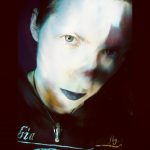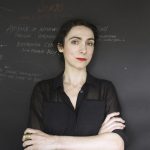The ongoing global pandemic of COVID-19 has exposed SARS-CoV-2 as a potent nonhuman actant that resists the joint scientific, public health and socio-political efforts to contain and understand both the virus and the illness. Yet, such a narrative appears to conceal more than it reveals. The seeming agentiality of the novel corona virus is itself but one manifestation of the continuous destruction of biodiversity, climate change, socio-economic inequalities, neocolonialism, overconsumption and anthropogenic degradation of nature, broadly speaking. Furthermore, focusing on the virus – an entity that does not fulfil the basic biological criteria of what counts as ‘life’ and holds an ambiguous status between the ‘living’ and ‘non-living’ – brings into question the issue of the agentiality of non/living matter. While the story of viral potency seems to get centre stage, overshadowing the complex and perverse entanglement of processes and phenomena which activated these potentials in the first place, the COVID-19 pandemic also becomes a prism that sheds light on the issues of environmental violence; social and environmental injustices; temporal, spatial and material scales at work in the Anthropocene; more-than-human and non/living agentiality; and ethico-political responses that the present situation may mobilise. Bringing together perspectives and toolboxes from across art, science and theory, this group will focus on the following enquiries:
- What is the role of art in the unpacking/understanding of the now? How can art mobilise a better understanding of possible futures?
- How can we understand the long- and short-term (temporal); local and global (spatial); micro- and macro-scales of more-than-human and non/living actants and the processes of the Anthropocene they are involved in (like previously unknown viruses, for example)?
- What are the conceptual and material boundaries of living and non-living as well as their potentials and limitations as actants?
- What ethical and political response may such an onto-epistemological revision of understandings generate?
To see the working group presentation click here.
Workgroup members

Marietta Radomska is a Postdoc at Linköping University, Sweden (Gender Studies) and University of Helsinki, Finland (Art History). She is the Co-director of The Posthumanities Hub; founder of The Eco- and Bioart Research Network; founding member of Queer Death Studies Network and International Network for ECOcritical and DECOlonial Research. Radomska is a philosopher and posthumanities scholar, and has published in Australian Feminist Studies, Somatechnics, and Women, Gender & Research, among others.

Terike Haapoja is a visual artist based in New York. Haapoja’s artworks, publications, writings and political projects investigate the mechanics of othering with a specific focus on issues arising from the anthropocentric world view of Eurocentric traditions. Haapoja represented Finland in the 55 Venice Biennale. Her work was awarded the ANTI prize for Live Art (2016), Dukaatti-prize (2008). Haapoja’s collaboration with Laura Gustafsson was awarded the Finnish State Media art award (2016) and Kiila-prize (2013).

Margherita Pevere is an artist and researcher with a visceral fascination for biological matter. Bacteria, animals, and plants are her allies in the exploration of ecological complexity. Her installations and performances are chimeras intertwining poetics and controversy, critique and desire. Pevere is PhD candidate (Artistic Research) at Aalto University, Helsinki, in collaboration with Biofilia Laboratory and supported by the Finnish National Agency for Education and Kone Foundation.
https://www.margheritapevere.com/
 Markus Schmidt founded BIOFACTION, a technology assessment, science communication and art-science company in Vienna, Austria. With a background in electronic engineering, biology and risk assessment he carried out an environmental risk assessment and public perception studies in various fields, such as GM-crops, nanotechnology, converging technologies, and synthetic biology. He has published over 35 peer review papers and 3 edited books about the future of life. In 2010 he helped to chart the field of xenobiology.
Markus Schmidt founded BIOFACTION, a technology assessment, science communication and art-science company in Vienna, Austria. With a background in electronic engineering, biology and risk assessment he carried out an environmental risk assessment and public perception studies in various fields, such as GM-crops, nanotechnology, converging technologies, and synthetic biology. He has published over 35 peer review papers and 3 edited books about the future of life. In 2010 he helped to chart the field of xenobiology.

Mayra Citalli Artist, interdisciplinary researcher and curator in visual arts and body discourses (gender and racism), design and textile innovation research. She has received honorary mentions for doctoral and master final dissertations. As an artist, she was selecting, the first artist woman in the resident Air-Montreux, Switzerland (2019), She and the Mexican performer Víctor Martínez developed Laboratory of actions in Public Space (Berlin, 2019). She currently develops curatorial research Monstruas: teratology of the feminine.